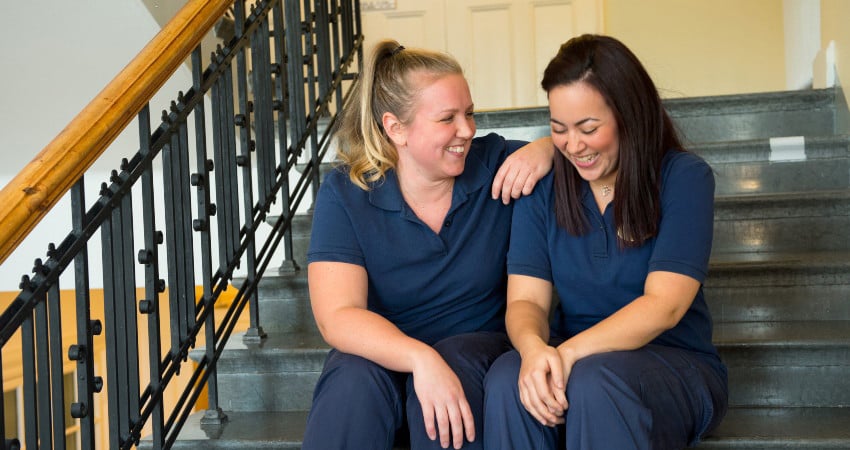
Finetuned adjustments improve posture and mobility
Etac Cross 5
Emmeli Bryant-Meisner, Physio Therapist and Maria Karlsson, Occupational Therapist works at the retirement home Danvikshem just outside Stockholm, Sweden.
“As a Physiotherapist, I’m focused on biomechanics, strains, joint mobility, posture…” Emmeli begins. With better support that improves posture, you can use your strength and achieve more. "If the equipment and the physical abilities can combine effectively, it will improve the user's quality of life.” says Maria. “There is a lot we can do”, Emmeli adds. “It is important to understand how the user’s abilities can be best used. I believe Maria and I have a big advantage as we complement each other and enjoy working together. We can also monitor the residence closely over time and adapt training, activities and of course the wheelchair when needed”.
No preconceptions
Emmeli tells us that when they receive information about a new user, it is often not entirely correct. This discrepancy can be due to when you meet the user; at lunch when the user is alert or late afternoon. “At the same time, it’s teamwork. Care staff sees the residents every day, and their feedback is crucial. This is extra important when we introduce new equipment to a user. How does it work when we are not there? Are any additional adjustments needed? Caregivers’ insights into the user´s everyday life is crucial to understanding their needs and taking advantage of their capabilities in the best possible way.”, emphasizes Maria.
Where are the boundaries?
“Often there is potential to improve. With a properly adjusted wheelchair a user can progress and become a completely different person!”, says Emmeli. “It is not always clear where the difficulties lie between the users potential and our goals for the user. I think we should highlight opportunities, but be realistic and realize that everyone is has their limitations. Today Maria and Emmeli will set up a wheelchair for the user Maj-Britt. She moved in two years ago, with a broken arm, seated in a wheelchair. “When you are older and suffer from a fracture, recovering is harder, you can easily lose abilities that you once had. With a broken arm, Maj-Britt could not support herself on a walker, so her balance deteriorated.”, Emmeli explains. Maj-Britt can still stand up and take some steps, but needs to be supervised due to her poor balance. It is important she feels free to use the wheelchair and accept it as an alternative form of mobility. "With a properly adjusted wheelchair, a user can progress and become a completely different person"
Improve posture and mobility
Maj-Britt thinks it’s hard to propel the wheelchair and her arms get sore. The goal is to propel the wheelchair more easily and to reduce the pain.
The finetuning made the difference
After half an hour of fine-tuning, where Emmeli and Maria adjusted the leg supports, lowered the back support, arm supports and moved the rear wheels forward – the wheelchair is easier for Maj-Britt to propel. In addition, a change in hand rim gave her a better grip. Following all the adjustments Maj-Britt will now be able to propel the wheelchair more easily with less pain. “Maj-Britt will now be able to propel the wheelchair more easily with less pain.”
Related products
Please note
A case story is used to show an individual product solution and the experiences related to its use.
The configuration and use of the product, including its accessories is determined based on the preferences of the user, their healthcare professionals, the environment, constraints and local market-specific preferences. The case story is only a supplement to the product's manual/assembly instructions and does not in any way replace these instructions. Products, sizes, configurations, accessories shown might not be available on all markets. Please contact your local sales organization for updated information on availability in your country.